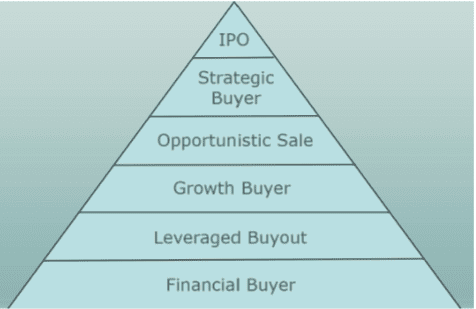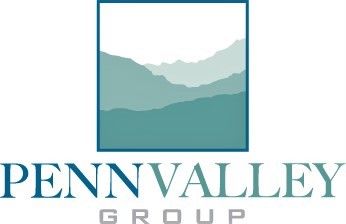Why does a business owner need to plan an Exit Strategy?
The main goal of any exit strategy plan is to maximize the value of the business or asset built and operated successfully by the business owner(s). Business plans get you into business and keep you on track in the early years. Exit plans get the business into the most valuable operating posture. Should the opportunity arise, a company operating under a proper exit plan will garner a much higher value upon the sale or significant disposition of the business. Owners must understand and embrace those aspects of the business most valued by buyers.
Experienced “Buyers” have a distinct advantage over owners when deal negotiations happen if the business owner(s) have not prepared well if entering the deal ‘pro se’ or are not using an experienced Sell-Side advisory firm to represent and protect their interests.
The following are key considerations included in any exit strategy plan.
- Timeline to exit
- Value drivers
- Exit mechanism
- Acceptable deal structures
- Universe of potential buyers
- Modeling the business for exit
- Actionable initiatives based on timeline
- Expected valuation
The timeline to exit is usually expressed as a range and will determine actionable options.
Short or no timeline
Actionable options – limited to selling what is in place, with some minor modifications
One year to sale
Actionable options – restructuring and/or right-sizing the organization Develop a modified reporting structure
Years to sale
Actionable options – Identify and prioritize initiatives that may include acquisitions to increase revenue and EBITDA
Value the individual initiatives and their potential impact on the exit strategy
When valuing a business for sale, the value drivers include the following:
- Earnings
- Growth
- Recurring revenue
- Customer base – breadth and depth
- Revenues under contract
- Balance sheet
Real Estate is offered for sale or lease where the location or facility is foundational for the continued business operation.
Acceptable Deal Structures
Typical deal structure components include:
Cash at closing and paid overtime
Stock or equity in the acquiring firm with a future earnout
Seller’s Note – non-recourse
Earnouts based on anticipated growth projections offered in the business snapshot.
Employment/consulting agreement for transition or continued management

The Value Pyramid seeks to identify exit mechanisms in a hierarchy of probable financial outcomes based on the type of Buyer who will acquire the business.
In best-selling scenarios where an owner-operated business offers unique value or market position, the Opportunistic or Strategic Buyer will be prepared to provide the highest price multiple of the business’s adjusted EBITDA, plus any other core assets supporting the business operation.
When valuing a business for sale, the value drivers include the following:
- Earnings
- Growth
- Recurring revenue
- Customer base – breadth and depth
- Revenues under contract
- Balance sheet
Real Estate is offered for sale or lease where the location or facility is foundational for the continued business operation.
Universe of Buyers for Your Business
The Penn Valley database has about 300 potential buyers. Penn Valley Group typically will source five or more buyers for a business we represent for the business owner and include Buyers from the following groups;
- Private Equity buyers
- Growth buyers
- Financial buyers
- Opportunistic buyers
Modeling for Exit – Managing for the top of the Value Pyramid, Right-sizing the business
- By line of business and geography
- Increase revenue/gross margin via decreased operating costs
- Identify the General and Administrative expense structure that will support current business volumes.
- Staffing levels should be adjusted according to business volumes, considering technical certifications when required.
- This can be accomplished through an analysis of historical financials
- Translates into an optimal earnings model
- At the end of the day, it’s all about earning
Expected Valuation: Establish an acceptable valuation goal
- All stakeholders should own the goal
- The goal should be realistic and achievable within the desired and agreed timeline.
- The goal should assume the most conservative exit mechanism
- Financial buyer – lowest multiple
- Assume a minimum earnings level
- Combine to establish baseline valuation on buyout
Actionable Initiatives
- Actionable initiatives should be defined by their contribution to gross margin within the specified timeline.
- Define initiatives around the existing strengths of the company
- Define initiatives based on gross margin and value drivers
- This exercise usually yields many potential initiatives that contribute to the valuation goal.
Reduce costs
Every dollar of reduction in G&A translates into $4 to $6.5 upon exit
Increase sales
Every dollar increase in gross margin translates into $4 to $6.5 upon exit (assuming no change in G&A expense)
Acquisition options
Should not be carefully considered to bolster earnings in a highly leveraged
approach
Exit Strategy Planning Summary
- Timeline and valuation expectations will drive strategy
- All stakeholders must be bought in
- Actionable initiatives (prioritized) will drive valuation
- Value Drivers should play a role in any exit strategy
Acquisitions can be a powerful, low-risk way to ratchet up earnings and valuation An Opportunistic Buyer can trump all other Buyer scenario.
